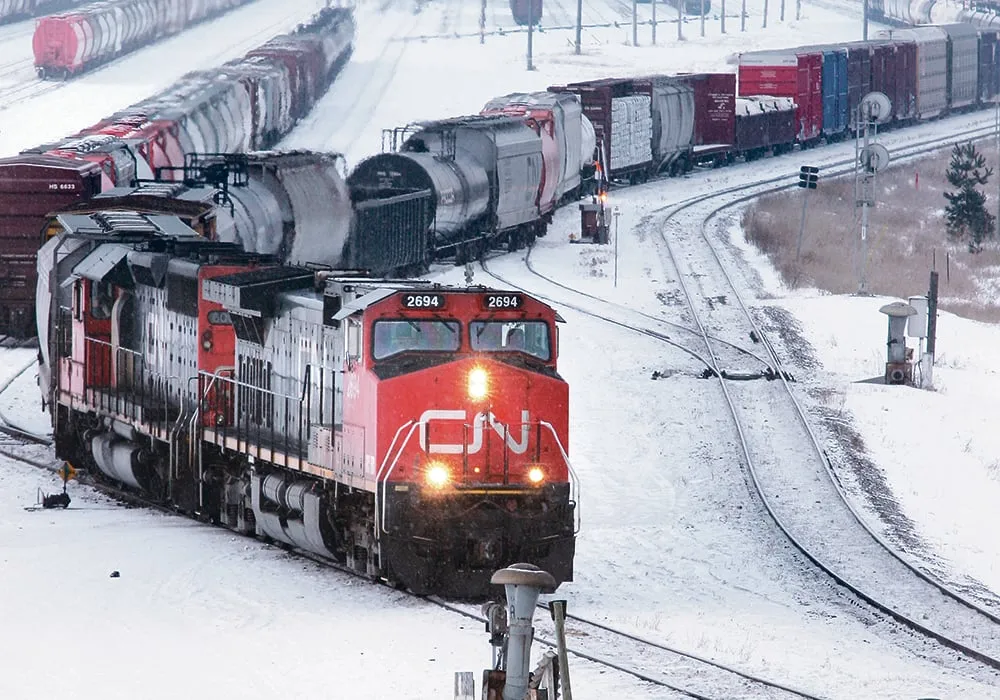
CN Releases 2025–2026 Grain Plan to Strengthen Canada’s Agricultural Supply Chain
Commitment to efficiency, transparency, and investment underscores CN’s strategy for record-breaking grain movement.
Canadian National Railway Company has officially released its 2025–2026 Grain Plan, outlining a forward-looking strategy designed to elevate the efficiency and reliability of grain transportation across Canada. With disciplined planning, ongoing infrastructure investments, and a firm commitment to collaboration throughout the supply chain, CN is positioning itself to continue playing a pivotal role in supporting Canadian agriculture.
This year’s plan builds on CN’s record-setting performance in the previous crop year, when it successfully moved an unprecedented volume of grain to both domestic and international markets. For the upcoming crop year (2024–2025), current projections anticipate grain movement from Western Canada will total approximately 31 million metric tonnes (MMT). This would surpass the previous record by around one million metric tonnes, including both bulk and processed grain shipped via carload.
A Comprehensive Vision for Agricultural Logistics
At the core of CN’s 2025–2026 Grain Plan is a commitment to ensuring that Canada’s grain sector remains globally competitive. The plan integrates end-to-end supply chain coordination, infrastructure optimization, digital transparency, and customer-centric service enhancements.
“Our Grain Plan reflects CN’s unwavering commitment to Canadian agriculture and the global competitiveness of our farmers and grain handlers,” said Tracy Robinson, President and Chief Executive Officer of CN. “We’ve taken a comprehensive, end-to-end view of the supply chain by investing where it matters most, collaborating with partners, and ensuring we have the people, equipment, and processes in place to move the new crop.”
This year’s strategy focuses on three core pillars: capacity to meet demand, innovative supply chain coordination, and end-to-end visibility.
1. Capacity to Meet Demand: Ensuring Readiness for a Heavy Grain Year
CN is planning to move between 27.0 and 29.5 MMT of grain and processed grain products during the 2025–2026 crop year. This range reflects anticipated demand based on agricultural production estimates and international market trends.
To support this volume, CN reports having adequate locomotive power, hopper car fleets, and trained personnel ready to deliver grain efficiently across its vast North American rail network. These resources will enable CN to meet demand under normal operating conditions, including seasonal weather patterns and infrastructure constraints.
Moreover, CN has continued investing in expanding rail capacity in key grain-producing corridors. These infrastructure improvements, which include double-tracking segments and modernizing yards, are aimed at minimizing bottlenecks during peak harvest season and maximizing fluidity in railcar turnaround.
2. Innovative Supply Chain Coordination: Rethinking Empty Car Distribution
One of the most significant innovations in CN’s 2025–2026 Grain Plan is a restructured approach to empty hopper car distribution, particularly for grain exports routed through West Coast ports.
Traditionally, empty grain cars have been allocated from major prairie rail hubs. Going forward, CN will shift to a “port-first” distribution model, whereby cars will be deployed directly from Vancouver to customer loading points. This change aims to improve both efficiency and visibility across the network by aligning empty car delivery more closely with vessel schedules and terminal operations.
This adjustment is expected to help reduce dwell times, optimize rail asset utilization, and allow grain handlers to plan more effectively for inbound logistics.
Additionally, CN customers will benefit from enhanced digital tools that provide real-time tracking of rail shipments. The company’s rail shipment tracking platform will give customers better insights into car locations, estimated arrival times, and system updates.
3. End-to-End Transparency: Real-Time Insights for All Stakeholders
Transparency continues to be a cornerstone of CN’s approach to grain logistics. To this end, the company is reinforcing its commitment to open communication and regular reporting through tools like the Western Canadian Grain Report and operational dashboards.
These digital platforms provide weekly updates on key performance indicators, including:
- Grain car orders submitted and fulfilled
- Dwell times at loading and unloading locations
- Network fluidity metrics
- Port terminal activity
- Equipment cycle times
By offering this level of granular, real-time insight, CN enables farmers, grain companies, terminal operators, and other partners to make informed, timely decisions that contribute to a more synchronized and effective supply chain.
A Broader Commitment to Canadian Agriculture
Beyond the operational details, CN’s 2025–2026 Grain Plan reflects a deep and long-standing commitment to Canada’s agricultural community. With over a century of experience moving prairie grain to global markets, CN remains a vital link in connecting rural Canada to consumers around the world.
CN’s capital investments in rail infrastructure—including siding extensions, new locomotives, and upgraded digital systems—have consistently been aligned with the evolving needs of the agriculture sector. The Grain Plan also underscores the importance of multi-stakeholder collaboration, bringing together farmers, handlers, port authorities, and government partners to achieve shared goals.
This holistic, data-driven, and customer-oriented strategy positions CN not just as a transporter of grain but as a critical enabler of food security and trade competitiveness.
As the 2025–2026 crop year approaches, CN is well-equipped to meet the challenges of high-volume grain transportation. With the global demand for Canadian agricultural products continuing to grow, the company’s readiness and adaptability will be crucial in supporting the sector’s resilience.
From upgrading distribution models and increasing transparency to maintaining surge capacity and building trusted partnerships, CN’s Grain Plan is a roadmap for sustained excellence in bulk rail logistics.
“The agriculture sector is a cornerstone of the Canadian economy,” said Robinson. “Our plan is built to deliver results—for farmers, for customers, and for the supply chain as a whole.”
With its 2025–2026 Grain Plan, CN reaffirms its role as a trusted logistics partner for Canadian agriculture, ready to move harvests from field to port—efficiently, reliably, and transparently.

